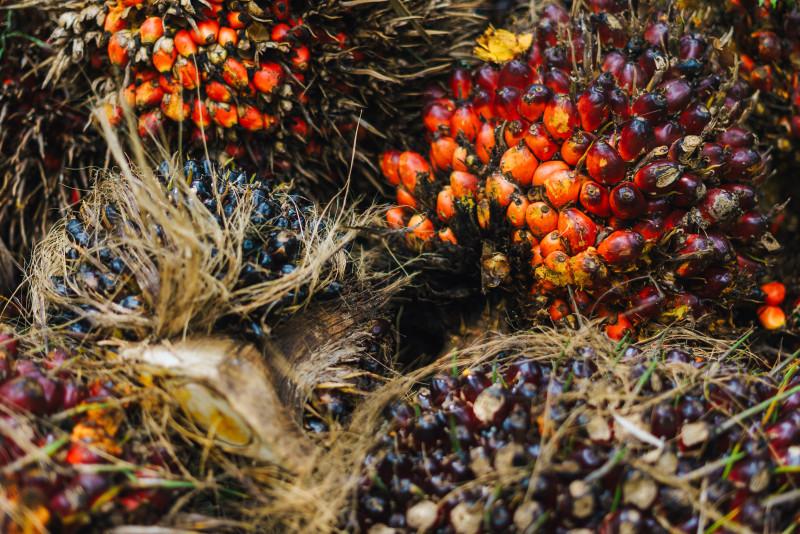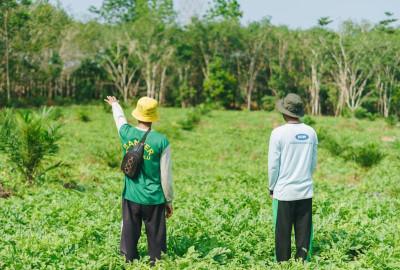
The Backbone of Indonesia’s Plantation Economy
Indonesia is globally recognized as thelargest producer of palm oil, contributing more than 55% of the world’s total supply. Oil palm has become the country’s most strategic plantation commodity, surpassing traditional crops such as rubber, coffee, or cocoa in terms of production volume, export revenue, and socio-economic impact.
With over16 million hectaresof plantations and more than16 million Indonesiansdirectly or indirectly dependent on the industry, palm oil is not just an agricultural product—it is a lifeline for the economy, rural livelihoods, and global food security.
Indonesia as the World’s Largest Palm Oil Producer
Palm oil’s dominance in Indonesia is unmatched. Several factors explain this position:
Scale of Production
Indonesia produces over45 million metric tons of crude palm oil (CPO)annually.
The country’s output surpasses Malaysia, the second-largest producer, by a wide margin.
Export Leadership
Palm oil is Indonesia’stop non-oil and gas export commodity, contributing more than USD 25 billion annually.
Key markets include India, China, the EU, and increasingly Africa and the Middle East.
Employment Impact
Approximately4.5 million smallholder farmerscultivate oil palm, supported by millions of plantation workers, transporters, and processors.
The industry sustains entire rural economies, particularly in Sumatra and Kalimantan.
Palm oil has evolved from being just an agricultural crop to becomingIndonesia’s flagship commodityon the global stage.
Why Oil Palm Outshines Other Plantation Commodities
Indonesia has long been a powerhouse in plantation crops—rubber, cocoa, coffee, sugarcane, and tea all have historical importance. Yet none compare to palm oil in terms of scale and impact.
Higher Yield per Hectare
Oil palm is by far the most efficient oilseed crop. It produces up to4–5 tons of oil per hectare, compared to less than 1 ton for soybean or sunflower.Versatility of Use
Palm oil is used in food (instant noodles, biscuits, cooking oil), non-food (cosmetics, detergents, pharmaceuticals), and energy (biofuel). This versatility makes demand resilient.Export Revenue
While coffee and cocoa generate niche value, palm oil dominates in sheer export earnings, ensuring government revenue and trade balance stability.Inclusive Growth
Palm oil is cultivated not only by large companies but also bymillions of smallholders, making it more inclusive than many plantation crops.
The Socio-Economic Significance of Palm Oil
Palm oil is more than just an export commodity—it is embedded in Indonesia’s socio-economic fabric.
Rural Development
Oil palm has transformed remote areas into thriving rural economies. Villages in Riau, North Sumatra, West Kalimantan, and South Sumatra have seen rising incomes, infrastructure development, and better access to education and health due to palm oil revenues.
Poverty Reduction
Studies have shown thathouseholds engaged in palm oil cultivation earn significantly higher incomescompared to those dependent on subsistence farming. Palm oil is often cited as a driver of rural poverty reduction.
Food Security and Affordability
Domestically, palm cooking oil is the most widely consumed edible oil in Indonesia. Its affordability compared to soybean or sunflower oil is critical in ensuring food security for millions of households.
Challenges Facing Indonesia’s Palm Oil Industry
Despite its dominance, the palm oil sector faces several critical challenges that could undermine its future:
1. Environmental Concerns
Deforestation, peatland conversion, and greenhouse gas emissions have placed the industry under global scrutiny. Environmental NGOs often link palm oil to biodiversity loss and climate change.
2. Global Market Pressure
TheEU Deforestation Regulation (EUDR)and restrictions on palm oil biofuels pose threats to Indonesia’s exports. Western consumers increasingly demanddeforestation-free, traceable palm oil.
3. Sustainability Certification Gap
RSPO (Roundtable on Sustainable Palm Oil)is widely recognized in Europe but remains voluntary.
ISPO (Indonesian Sustainable Palm Oil)is mandatory but less recognized globally, raising questions about credibility in international markets.
4. Smallholder Inclusion
With 40% of production coming from smallholders, limited access to financing, training, and certification remains a bottleneck. Without integrating smallholders, sustainability goals cannot be achieved.
5. Price Volatility
As a globally traded commodity, palm oil is exposed to fluctuations in international markets, impacting farmer incomes and government revenues.
Pathways to Strengthen Palm Oil’s Position
For palm oil to remain Indonesia’s flagship plantation commodity, the sector must adapt to global challenges and embrace sustainability.
1. Scaling Up Sustainability
Indonesia must accelerate the adoption ofISPO reforms, align with international standards, and ensuretraceability across the supply chain.
2. Empowering Smallholders
Investment infarmer training, cooperative models, digital tools, and inclusive financingwill help smallholders increase yields and access certification schemes.
3. Embracing Regenerative Agriculture
Innovations such asintercropping oil palm with food crops, using organic fertilizers, and restoring peatlands can make palm oil part of the solution to climate change rather than part of the problem.
4. Diversifying Markets
While the EU market is shrinking, demand inIndia, China, Pakistan, and Africacontinues to grow. Indonesia must strengthen trade partnerships and explore new frontiers.
5. Leveraging Technology
Fromsatellite monitoring to blockchain traceability, digitalization offers opportunities to ensure transparency, efficiency, and compliance with global standards.
Palm Oil vs Other Plantation Commodities: A Comparative View
Commodity | Annual Production (Indonesia) | Export Earnings | Global Share | Key Challenge |
|---|---|---|---|---|
Palm Oil | 45+ million tons | $25+ billion | 55% | Sustainability & EU regulations |
Rubber | 3.2 million tons | $5 billion | 27% | Price volatility, aging trees |
Cocoa | 700,000 tons | $1.2 billion | 7% | Productivity, pests |
Coffee | 760,000 tons | $1.5 billion | 6% | Climate impact, quality consistency |
Tea | 130,000 tons | <$200 million | 2% | Declining global demand |
This comparison underscores palm oil’ssheer scale and economic significancerelative to other crops.
The Future Outlook: Palm Oil as Indonesia’s Green Gold
Despite global controversy, palm oil remainsIndonesia’s “green gold.”Its unparalleled productivity, versatility, and socio-economic importance ensure it will remain at the heart of Indonesia’s plantation sector.
The path forward lies inbalancing competitiveness with sustainability. If Indonesia can position its palm oil as both high-volume and high-standard—meeting global expectations without sacrificing smallholder welfare—the commodity will continue to dominate global vegetable oil markets.
By embracinginnovation, certification, digital traceability, and inclusive growth, Indonesia can secure palm oil’s place not only as the country’s leading plantation commodity but also as aglobal model for sustainable agriculture.
Conclusion
Oil palm is undeniablyIndonesia’s leading plantation commodityand the backbone of its agricultural economy. As the world’s largest producer and exporter, Indonesia holds both the power and responsibility to shape the future of palm oil globally.
While challenges remain—environmental concerns, global scrutiny, certification gaps—the opportunities are immense. With the right balance ofsustainability, smallholder empowerment, and innovation, Indonesian palm oil can transform from a contested crop into a celebrated example of sustainable commodity production.



